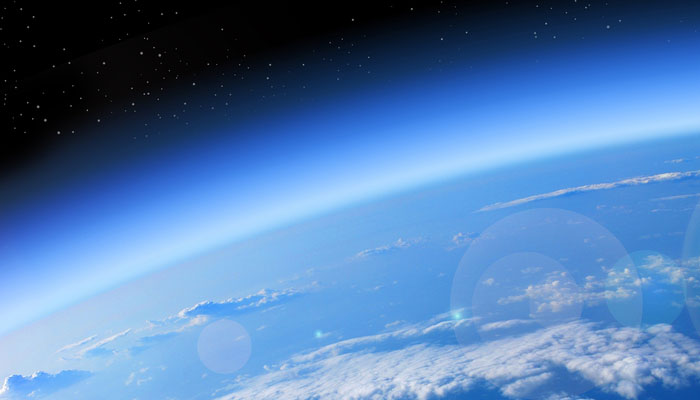Shutterstock
Back in the late 1970’s the Earth’s ozone layer was in serious trouble. This led to the global ban of aerosol sprays and coolants. Now, nearly 50 years later the ozone layer is showing signs that it is healing from the damage brought upon it by mankind.

The United Nations has issued a report that the Earth’s ozone layer looks well on its way to making a complete self-repair. The report added that the results serve as a prime example of what can be achieved through global agreements and cooperation.
Since the 2000’s, the ozone layer has begun to recover at about 3% per year.
Scientists are now predicting that the ozone layer over the northern hemisphere could be fully repaired by the 2030’s, and likewise for Antarctica by the 2060’s.
In 1976, it was first discovered that chemicals being released into the atmosphere by industry, mainly chlorofluorocarbons (CFCs) were depleting Earth’s ozone layer.
Then in 1985, two scientists discovered an annual depletion of ozone occurring above Antarctica, describing them as “ozone holes.” The ozone layer isn’t uniform, its thickness varies worldwide. It is generally thinner near the equator and thicker near the poles. Therefore, a depletion in areas were the ozone layer is usually thick was especially alarming.
By the 1990’s, it was even worse, with some 10 percent of the ozone layer depleted.
In an effort to save the planet, The Vienna Convention for the Protection of the Ozone Layer was held and a Multilateral Environmental Agreement was signed on 22 March 1985. The agreement was ratified by all United Nations members, as well as, the Holy See, Niue, the Cook Islands and the European Union for the express purpose of protecting the ozone layer. It set forth rules and goals for how CFCs are used around the globe.
Not only was the agreement one of the most successful treaties in the history of the world, but it appears to have borne fruit in accomplishing the protection of the planet.
The ozone layer, also called the ozone shield, is a region which lies within the Earth’s stratosphere that is responsible for absorbing most (about 97-99 percent) of the ultraviolet radiation from the sun. It wasn’t discovered until 1913 by French scientists.
A type of ultraviolet radiation called UV-C is very harmful to all living things.
UV-B radiation, is helpful in moderate doses, as it is important for the skin’s production of vitamin D. However, too much UV-B radiation is harmful to skin and it’s the main cause of sunburn. Excessive exposure to UV-B radiation is harmful and can cause suppression of the immune system, cataracts, and genetic damage, including skin cancer.
A depletion of the ozone layer could not only make it so that humans couldn’t go outdoors without full body protection, but it could potentially extinguish all life on the planet.
But the good news is, now that the ozone is beginning to repair itself, we may no longer need to worry that one day we might be forced to wear a spacesuit to go outdoors.